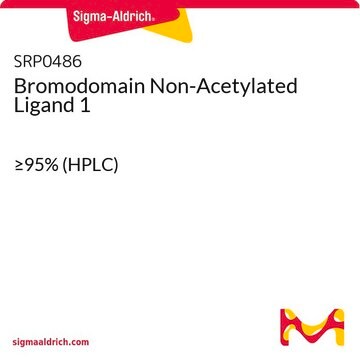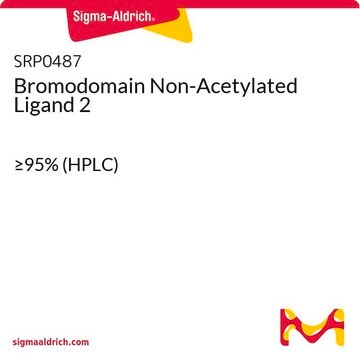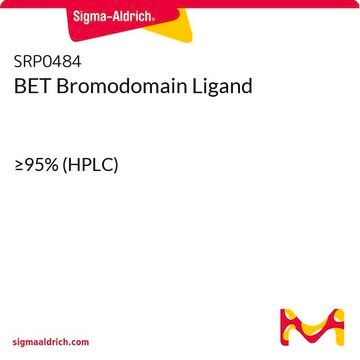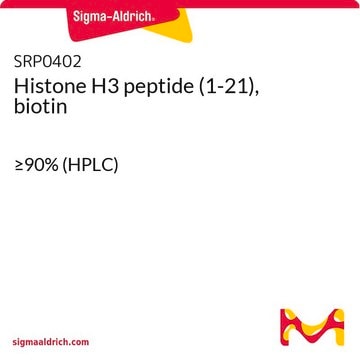SRP0486
Bromodomain Non-Acetylated Ligand 1
≥95% (HPLC)
Select a Size
About This Item
¥6,475.70
Estimated to ship on2025年12月12日Details
Assay
≥95% (HPLC)
form
aqueous solution
mol wt
2602.1 kDa
packaging
pkg of 5 mL
shipped in
dry ice
storage temp.
−20°C
1 of 1
This Item | SRP0487 | SRP0484 | SRP0402 |
|---|---|---|---|
| assay ≥95% (HPLC) | assay ≥95% (HPLC) | assay ≥95% (HPLC) | assay ≥90% (HPLC) |
| form aqueous solution | form aqueous solution | form aqueous solution | form aqueous solution |
| packaging pkg of 5 mL | packaging pkg of 5 mL | packaging pkg of 5 mL | packaging pkg of 80 nmol |
| shipped in dry ice | shipped in dry ice | shipped in dry ice | shipped in dry ice |
| storage temp. −20°C | storage temp. −20°C | storage temp. −70°C | storage temp. −70°C |
| mol wt 2602.1 kDa | mol wt 2723.2 kDa | mol wt 2728.2 kDa | mol wt - |
General description
Storage Class Code
10 - Combustible liquids
Flash Point(F)
Not applicable
Flash Point(C)
Not applicable
Regulatory Information
Choose from one of the most recent versions:
Certificates of Analysis (COA)
Don't see the Right Version?
If you require a particular version, you can look up a specific certificate by the Lot or Batch number.
Already Own This Product?
Find documentation for the products that you have recently purchased in the Document Library.
Our team of scientists has experience in all areas of research including Life Science, Material Science, Chemical Synthesis, Chromatography, Analytical and many others.
Contact Technical Service


